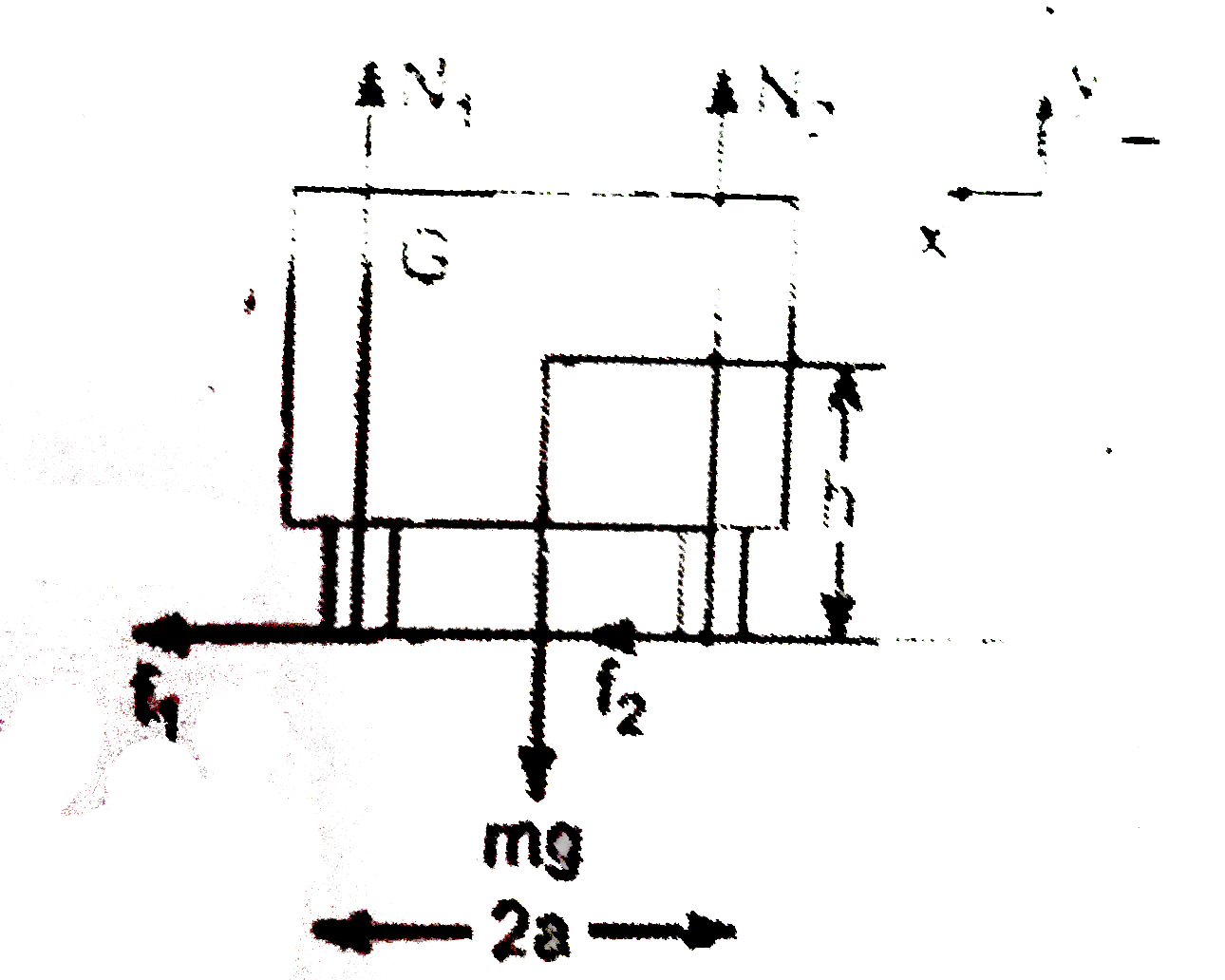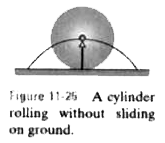SAMPLE PROBLEM from RESNICK AND HALLIDAY PHYSICS (HINGLISH) RIGID BODY DYNAMICS-II for Class 12
| Class 12 | PHYSICS |
| Chapter | RIGID BODY DYNAMICS-II |
| RESNICK AND HALLIDAY PHYSICS (HINGLISH) | SAMPLE PROBLEM |
| Medium | English |
| Academic Year | 2023-2024 |
Question 1
The current land-speed record was set in the Black Rock Desert of Nevada in 1997 by the jet-powered car Thrust SSC. The car's speed was 1222km/h in one direction and 1233km/h in the opposite direction. Both speeds exceeded the speed of sound at that location (1207 km/h). Setting the land-speed record was obviously very dangerous for many reasons. One of them had to do with the car's wheels. Approximate each wheel on the car Thrust SSC as a disk of uniform thickness and mass M = 170 kg and assume smooth rolling. When the car's speed was 1233 km/h, what was the kinetic energy of each wheel?View SolutionQuestion 7
A wheel rolls smoothly along a floor while being accelerating horizontally by a force →Fn applied at its top. The wheel has radius R = 0.500 m, mass m = 1.60 kg, and acceleration magnitude a=2.00m/s2. The frictional force on the wheel is in the forward direction and has magnitude f = 1.80 N. What is the rotational inertia of the wheel?View SolutionQuestion 8
A uniform hoop, disk, and sphere, with the same mass M and same radius R, are released simultaneously from rest at the top of a ramp of length L = 2.5 m and angle θ=12∘ with the horizontal. The objects roll smoothly down the ramp.
(a) Which object wins the race to the bottom of the ramp?View SolutionQuestion 9
A uniform hoop, disk, and sphere, with the same mass M and same radius R, are released simultaneously from rest at the top of a ramp of length L = 2.5 m and angle θ=12∘ with the horizontal. The objects roll smoothly down the ramp.
What is vcom for each object at the bottom of the ramp?View SolutionQuestion 12
Figure 11-16a shows a safe (mass M = 430 kg) hanging by a rope (negligible mass) from a boom (a = 1.9 m and b = 2.5 m) that consists of a uniform hinged beam (m=85 kg) and horizontal cable (negligible mass).
What is the tension Tc in the cable? In other words, what is the magnitude of the force →Tc on the beam from the cable?View SolutionQuestion 14
a ladder of length L=12 m and mass m = 45 kg leans against a slick wall (that is, there is no friction between the ladder and the wall). The ladder's upper end is at height h = 9.3 m above the pavement on which the lower end is supported (the pavement is not frictionless). The ladder's center of mass is L/3 from the lower end, along the length of the ladder. A firefighter of mass M = 72 kg climbs the ladder until her center of mass is L/2 from the lower end. What then are the magnitudes of the forces on the ladder from the wall and the pavement?View SolutionQuestion 15
Let's assume that the Tower of Pisa is a uniform hollow cylinder of radius R = 9.8 m and height h=60 m. The center of Mass is located at height h/2, along the cylinder's central axis. In Fig. 11-18a, the cylinder is upright. In Fig. 11-18b, it leans rightward (loward the tower's southern wall) by θ=5.5, which shifts the com by a distance d. Let's assume that the ground exerts only two forces on the tower. A normal force →FNL=0 acts on the left (northern) wall, and a normal force we acts on the right (southern) wall. By what percent does the magnitude Far increase because of the leaning?View SolutionQuestion 17
A car of mass m travelling at speed v moves on a horizontal track. The centre of mass of the car describes a circle of radius r. If 2a is the separation of the inner and outer wheels and h is the height of the centre of mass above the ground, show that the limiting speed beyond which the car will overturn in given by
v2=grah
 View Solution
View Solution

